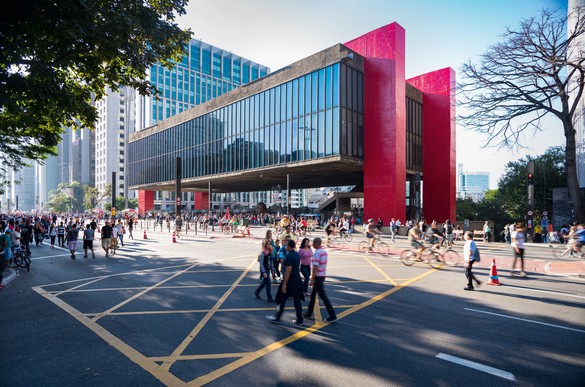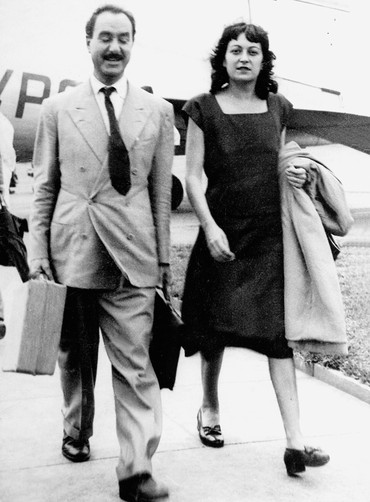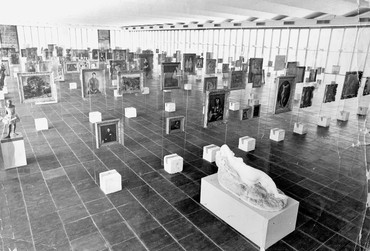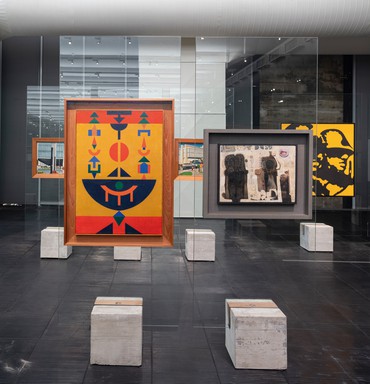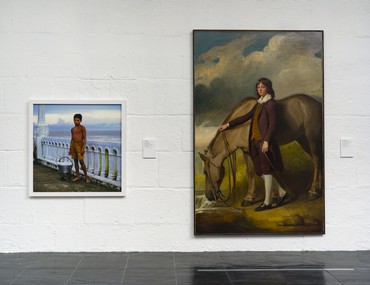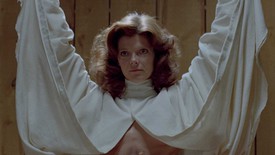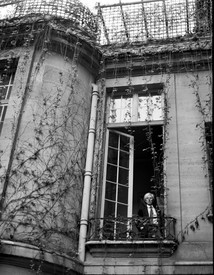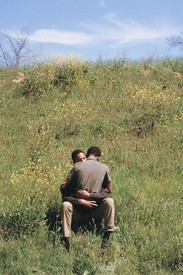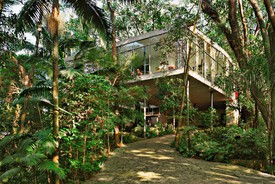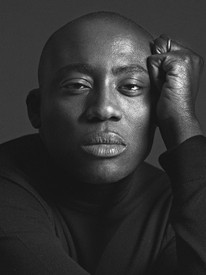
Louise Neri has been a director at Gagosien since 2006, working with artists and developing exhibitions, editorial projects, and communications across the global platform. A former editor of Parkett magazine, she has authored and edited many books and articles on contemporary art. Beyond the exhibitions she has organized for Gagosien, she cocurated the 1997 Whitney Biennial and the 1998 São Paulo Bienal, among numerous international projects.

A Brazil-based curator of major international exhibitions, including the São Paulo and Istanbul biennials, as well as key monographic exhibitions of Brazilian artists, from José Leonilson to Adriana Varejão, Adriano Pedrosa became artistic director of the Museu de Arte de São Paulo in 2014. Photo: courtesy MASP
The Museu de Arte de São Paulo (MASP) was founded in 1947 by Brazilian entrepreneur Assis Chateaubriand. The founding director, Pietro Maria Bardi, remained there until the early 1990s. In 1968 the museum moved to a new building on Avenida Paulista designed by Lina Bo Bardi, Bardi’s wife, specifically to host MASP’s collection. Besides designing the bold and distinctive red building, its single elevated span a feat of structural engineering for its time, Lina also devised a radical method of display for the permanent collection, as well as innovative exhibitions embracing popular and vernacular art forms. After Pietro retired, the museum’s signature display was forsaken in favor of a more conventional model.
In 2014, just a year after being appointed artistic director of MASP, Adriano Pedrosa, known for his large-scale international exhibitions as well as for important monographic studies of Brazilian artists, announced his commitment to restoring the Bo Bardis’ design aesthetic and exhibition philosophy at the museum. Here he speaks with Gagosien director Louise Neri—with whom he collaborated curatorially on the 1997 São Paulo Bienal, under the direction of Paulo Herkenhoff—about recollecting the past in order to reinvigorate and reinvent a museum for our time.
Louise NeriLet’s start with your philosophy and its evolution, which have profoundly impacted and reshaped the program of the museum as it appears today, and with the three catchwords—multiplo, diverso, plural, or inclusive, diverse, and plural—that encapsulate your directorial approach to the program and MASP itself.
Adriano PedrosaThe museum’s original mission, which we revisited two years ago, is what I identify myself with today. Every catalogue cites this mission, defining the museum as inclusive, diverse, and plural. It’s a starting point in terms of the museum’s philosophy, its concept, and the development of its program. It’s also linked to the institution’s history: the founding director, Pietro Maria Bardi, and his partner Lina Bo Bardi, the building’s architect, tried to develop exhibitions and programs in that spirit, even though MASP was always known, both locally and internationally, as Brazil’s major museum for European art. Now we’re in the twenty-first century and these challenges are still there. What might it mean to be an inclusive, diverse, plural museum, and how might that be reflected in our program, with its cycles of different themes?
LN In terms of aesthetic histories, dispelling the idea of a single narrative has always been central for you in your own curatorial practice.
APIndeed. It’s also what motivated us in 2017 to develop a yearlong program around histories of sexuality; in 2018, Afro-Atlantic histories; in 2019, feminist histories, women’s histories; this year, histories of dance; in 2021, Indigenous histories; and in 2024, histories of “diversity,” which in Brazil means queer histories. And we’re developing the exhibition program with a commitment to incorporating many of the thematic works into the display of the permanent collection as well.
LNCan you discuss the ongoing threads of discourse that define your programming, from the permanent collection across the signature thematic exhibitions on popular themes, cultural themes, and social themes? You mentioned this conceptual shift in 2017, but let’s go further back, to when you first started at the museum: you had specific ideas about how to revivify it, not only in terms of its important local cultural legacy but toward a much broader consideration of art, society, and culture.
APYes, the idea of “histories” is central. Histórias in Portuguese is rather different from the English term “history,” because it can encompass both fiction and nonfiction. Also, being plural, it infers the idea of more diverse and inclusive histories, polyphonic histories that are processual, fragmented, and incomplete, not all encompassing.
LNWhere did this idea start?
APWith a catalogue that I edited on the work of Valeska Soares, in 1995, titled Histórias. And then it came up again in the historical segment of the 1998 São Paulo Bienal: my major contribution to that segment, which was directed and largely curated by Paulo Herkenhoff, was to add the “s” to “histories” in the title of the project, Anthropophagia: Histories of Cannibalism. Then followed an exhibition project with Adriana Varejão, Histórias nas margens [Histories at the margins], and another with Lilia Moritz Schwarcz, Histórias mestiças [Mestizo histories]. This sequence of exhibitions and catalogues led to what we’re developing at MASP.
LNAs a comprehensive program.
APYes. And perhaps because I’m not an art historian—I trained as an artist and a lawyer—I’ve developed my interests around social history, political history, contemporary themes that affect people’s lives. For museums around the world, those themes seem much more relevant today than purely art-historical ones such as “expressionism” or “abstraction.”
LNWas the inextricability of life and aesthetics also one of your points of conceptual engagement with Lina Bo Bardi?
APYes. Pietro Maria Bardi was very invested in art history while Lina was keenly interested in the popular and vernacular. I find it quite amazing that this museum could combine the development of a magnificent collection of European art with a deep interest in the self-taught, the vernacular, and the popular.
LNAnd that this relationship could be housed in a radical modernist building. Bringing these three aspects together is a really powerful gesture.
APYes.
LN Can we discuss Bo Bardi’s philosophy of display, which impacted the actual programming of the museum? It seems important that you not only restored her radical method of display, using a system of glass-and-concrete easels, but you also restaged one of her most important exhibitions, The Hand of the Brazilian People.
APThe glass-easel display is a model of possibility, alternative and liberating (although it has its restrictions as well). I think it’s interesting to understand it as a tool for decolonizing what is otherwise a canonical collection of European masters.
LNWhat was Bo Bardi’s rationale for the glass easels?
in our exhibitions everything is in process, everything is in motion, in play, in transformation—which goes against the permanent collection and the permanent and definitive hierarchy of history that the collection implies.
Adriano Pedrosa
API think it came from some of the experimentation in exhibition display that was going on in Italy in the 1940s, such as the work of Franco Albini, who devised alternative ways of showing art, even sometimes suspending and floating it. But his approach was more precious than Bo Bardi’s, on a smaller scale and in an almost bespoke kind of context, using very refined materials. Bo Bardi’s concrete and glass, on the other hand, were both raw and everyday, bold choices that developed and complexified her approach. Although the glass-easel gallery is a really remarkable space, she worked against the idea of the museum as a luxurious, refined location. This is an important starting point. To take the pictures off the wall of the museum has deep philosophical and political implications; Bo Bardi may have realized that from looking at Albini. In her installations you walk through the art, you walk through the pictures, and by doing so you develop a closer rapport with them: they don’t exist on a different plane from you. This new situation gives them a democratic, open, accessible quality.
LNThey also assume a new object quality, because the viewer can see their backs for the first time. They are no longer simply images.
AP Yes, suddenly Bo Bardi’s notion of trabalho [work], as opposed to “artwork” or “oeuvre,” becomes visible. A painting can be a work as much as a wooden spoon can be a work, doing away with the distinction between art and artifact. This idea is put to extreme effect in the exhibition The Hand of the Brazilian People.
LN Yet Bo Bardi conceived the glass-easel gallery specifically for the historical painting collection, didn’t she? So the painting collection was still somewhat reified, as opposed to the artifacts in The Hand of the Brazilian People, where everything was laid out on the floor.
AP Funnily enough, I’ve argued just this myself in the past, but I’ve been criticized for it! When MASP opened on Avenue Paulista in 1968, the canonical European and Brazilian artists were on the second floor, in an exhibition organized by Pietro using Lina’s display methods, and The Hand of the Brazilian People, her exhibition, was on the lower ground floor. Like their respective exhibitions, I always have seen this couple as polar opposites who negotiated with each other, thesis and antithesis resulting in synthesis.
LNIn this context, what does “decolonization” mean for you?
APIn Europe and the United States, “decolonizing” implies including Africa, Latin America, and Asia. In Brazil, I think “decolonizing” means looking at the popular, the self-taught, the outsider, the vernacular. That’s why, for me, it was so interesting and rich to revisit The Hand of the Brazilian People and to raise Lina’s concept up to the second floor for the first time, which we did in 2016. We’ve also dedicated a number of solo shows to self-taught artists. As this is complicated territory to navigate, we decided to look at artists who have been important in the museum’s history.
LNWhat are some of the other continuing evolutions in your programming?
APThe next, crucial step for us, in 2021, is the inclusion of indigenous art. That entire year will be dedicated to indigenous histories, not only from Brazil but also internationally: Australia, New Zealand, Canada, Mexico, Peru, Scandinavia, and so on.
Revisiting the history of the museum is interesting and rewarding because we keep finding previous cases of what we want to do in the history of the exhibition and the history of the museum. Under Pietro’s direction, the museum staged about fourteen exhibitions a year, including, once every two or three years, an exhibition of indigenous art. That stopped when he left. In the five years that we have been at the museum, we’re still working toward bringing that material back into the program.
LNIn discussing this general broadening of the program, of building on the museum’s existing conceptual infrastructure, we can also mention your outreach to museums around the world to create novel situations of exchange. Did your background as an organizer of major international exhibitions, where these kinds of exchanges happen very regularly, inspire you to transpose your imaginative curatorial praxis into the mechanisms of institutional exchange? Other museums are doing this, but you have been very proactive and consistent in your move to supplement certain irremediable lacks in the collection through temporary exhibitions.
APMany museums around the world are questioning the idea of the permanent-collection display, which tends to ossify artworks, rendering them canonical. I think it’s more interesting to think of them in a more lively and dynamic way. So we call our permanent-collection display Picture Gallery in Transformation and the idea of that title connects to Bo Bardi’s glass easels, which are easy and quick to install once the artworks are prepared. Museums have limited space for their collections, but they can generate a certain dynamism by constantly changing the installation, moving things around, and offering new settings, new groups of works, new juxtapositions, new dialogues.
LNAre there “destination” works that have to stay permanently on display?
APYes, by artists such as Cézanne, Van Gogh, Manet, Modigliani, and also Brazilian artists.
LNWhat are some of your other strategies?
APWe have a rather generous policy on outgoing loans to institutional partners, even though lending works is a big sacrifice and a lot of administrative work. We have to be strategic.
LNCan you say more about Picture Gallery in Transformation?
APIn 2018, we established a program with Tate, in London. We borrowed seven key works of theirs for nine months and installed them among the permanent collection display in the glass-easel gallery.
LNAnd what was the selection predicated on?
APWe’re interested in showing works that we can’t acquire ourselves. With Tate, we were looking at modernisms outside of Europe and America, in this case British or British-based artists—Ibrahim El-Salahi from Sudan, Francis Newton Souza from India, Francis Bacon, L. S. Lowry, Sylvia Sleigh, and Gwen John—and more thematically at the figure, which is interesting for us, given that the focus or trend of our own collection is mostly around figurative art. Following that, we engaged in a more ambitious project with the Museum of Contemporary Art Chicago, this time borrowing eighteen works. In terms of looking at their collection in relation to our own, we have a strong international collection up until the early twentieth century, but we have very little international art from the postwar period itself. So when we started working with MCA, we considered many postwar artists who are lacking in our collection—Magritte, Matta, Wifredo Lam. Since then, we’ve committed to ensuring that at least half of the artists are women. So this year from MCA we have Marlene Dumas, Sherrie Levine, Cindy Sherman, Louise Bourgeois, Dorothea Tanning, and Gertrude Abercrombie. And now we’re working on a book, MASP Picture Gallery in Transformation, which maps all of these exchange exhibitions and shows what happens when a specific artwork is introduced to create a mindful juxtaposition with the collection.
LNUp to mid-career you were a curator of ambitious international projects that were also innovative exhibition models. Can you discuss how that part of your work has informed your distinctive and unique approach in the museum? You’re reinventing the institution, emphasizing aliveness and creativity, rethinking artworks as dynamic entities rather than distended in a fixed historical framework.
APTwo artist-curated exhibitions in American museums were formative references for me: Joseph Kosuth’s Play of the Unmentionable, at the Brooklyn Museum in 1990, and Fred Wilson’s Mining the Museum, at the Maryland Historical Society in 1992. I didn’t see either of them but I have the catalogues. What interested me was how those exhibitions regathered and recontextualized different objects in the museum, and how these new contexts, juxtapositions, and gatherings created entirely new meanings or uncovered latent ones.
LNA critical and deconstructive practice.
APYes, they debunked the high modernist belief that an artwork can be presented neutrally, the whole idea of the neutral white cube and the neutrality of the exhibition space, the institutional space, the exhibition narrative itself. The Histórias exhibitions are also trying to tackle this idea by bringing together different chronologies, works from different origins or different periods, or with totally different qualities.
LN In doing so, you’re creating a sort of chronotopic thickness of history, looking at so many things in the same spatial and temporal zone.
APYes, exactly.
LNAnthropology insists on the different temporalities embedded in forms of art that do not subscribe to modernist principles and mythologies of modernist truth.
APYes, so in our exhibitions everything is in process, everything is in motion, in play, in transformation—which goes against the permanent collection and the permanent and definitive hierarchy of history that the collection implies. For example, the cover of the catalogue for Histories of Childhood juxtaposes Auguste Renoir with Bárbara Wagner with children’s drawings—high European, contemporary Brazilian, and the child, whose art and voice are important for us at the museum.
LNIn talking about exhibition models, we still talk about benchmark exhibitions such as Magiciens de la terre [Centre Pompidou, Paris, 1989] or High and Low [the Museum of Modern Art, New York, 1990–91]. In fact, these were not novel structures for exhibitions; they just appeared to be so because of the centrist context in which they were produced and promoted.
APYes, absolutely.
LNThere was even a time in American museums when the artist’s-choice exhibition, such as the Kosuth and Wilson exhibitions that you cited, was an extremely provocative idea.
APIt goes back to the issues of diversity and inclusion. It’s political.
LNBut this revelation is now becoming visible in museums everywhere.
APYes, it’s a worldwide trend, a zeitgeist.
Photos: courtesy Museu de Arte de São Paulo
